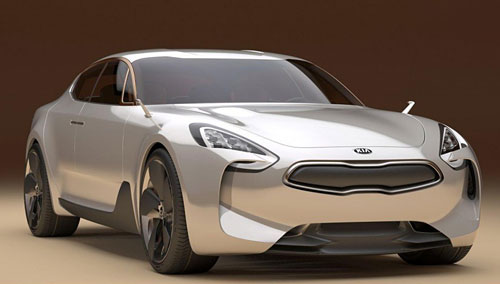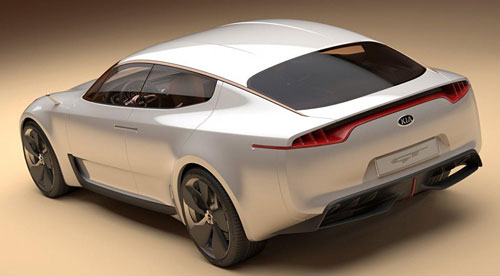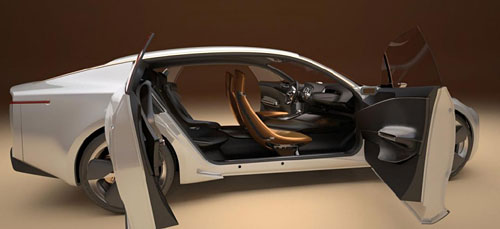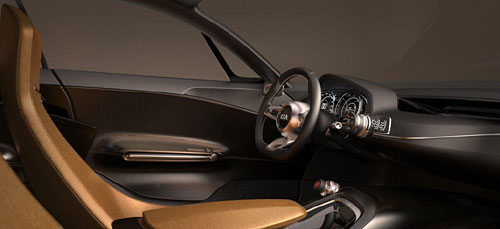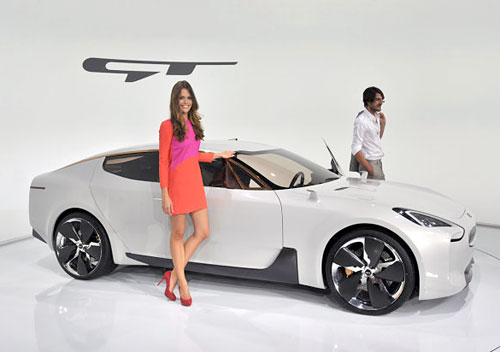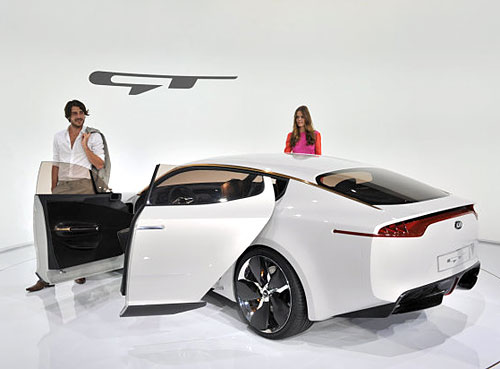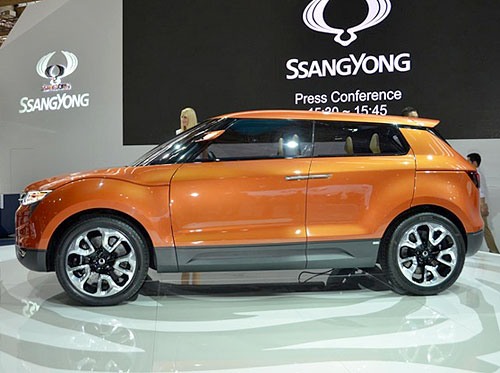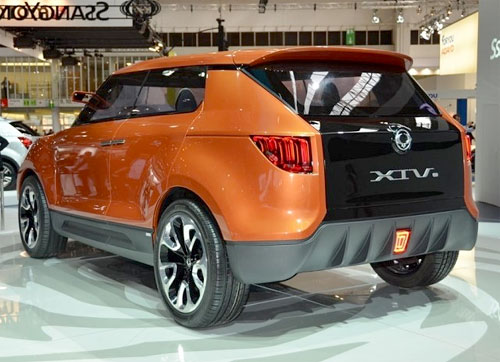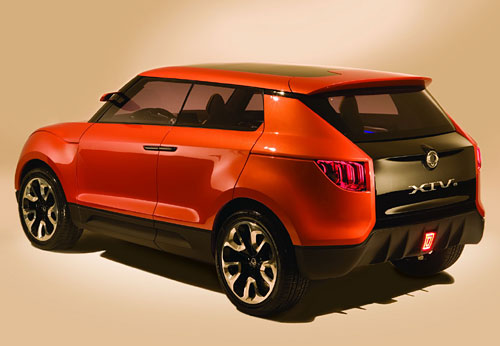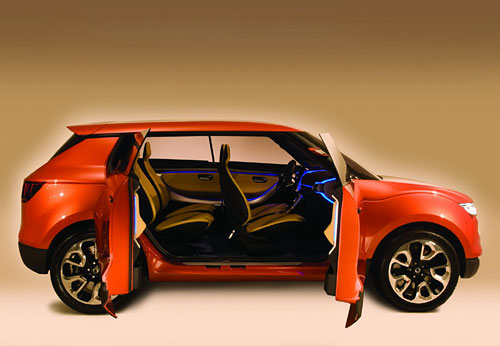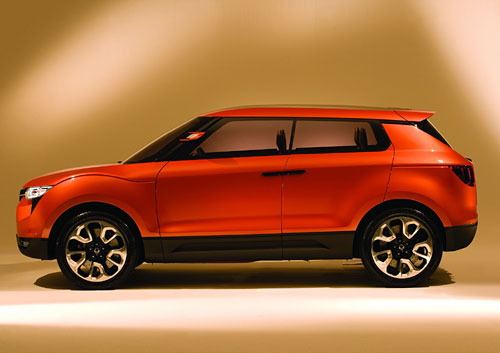
Concept Car wîth Gullwing Door, Tabletop Computer and Lounge-like Seating Debuts at 2011 North American International Auto Show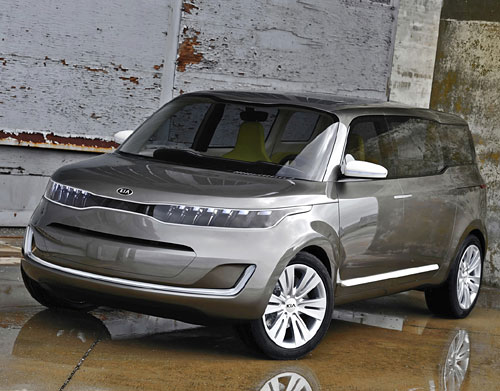
The KV7 is a deliberate move away from the angled fronts and heavily raked windscreens that have become commonplace in the minivan segment in recent times according to Kia.
“From the outset, we felt the category was in need of an honest reassessment due to the fact that everyone seems so desperate to attach the word ‘sporty’ to their minivan, even though vans, at their very core are simply a box,” said Tom Kearns, chief designer, Kia Motors America. “Rather than reject the box we chose to celebrate it, just like we did with the Soul, and the result is a straightforward yet sophisticated vehicle that retains the functionality vans are known for and meets the changing and diverse needs of today’s consumers.”

The KV7 concept's most striking feature is its passenger-side gullwing door, which creates a massive point-of-entry to the lounge-like interior when opened in conjunction wîth the pillar-less front passenger door. 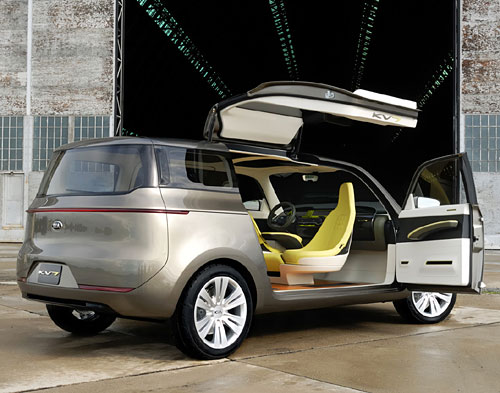
The KV7 concept's inviting face is highlighted by an interpretation of Kia's signature bold tabbed grille wîth vertical LED headlamps integrated within the design to create a clean, smooth look. The KV7 features several LED lighting elements that Kia's design team is evaluating for future production vehicles, including a continuous line of LED fog lights that span the entire front end of the vehicle and directional turn indicators on the outside mirrors and the rear of the vehicle that pulse in the direction being signaled. 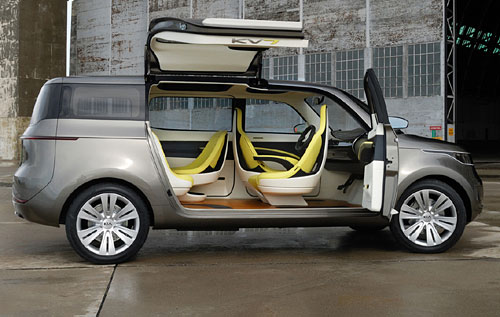
The KV7 concept's distinctive windshield follows the unique designs found on the new Sportage CÚV and Optima midsize sedan, and a series of near-continuous windows starting at the A-pillar provide uninterrupted views of a day at the beach or a night out on the town. And despite its non-traditional look, the KV7's length (191.85 in.), width (80.0 in.) and wheelbase (122.0 in.) are consistent wîth the van §egmènt and allow flexible seating configurations and a multitude of storage options. 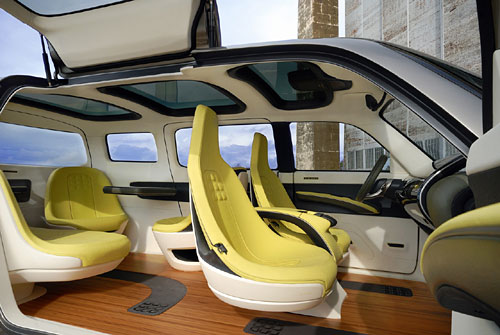
In the process of rethinking what a van's exterior appearance and image could be, Kia's Southern California design team also envisioned an interior to meet the needs of an entirely new group of consumers – a group of people referred to as 'Ringleaders.' Rather than using a van to transport children and their accompaniments, Ringleaders are busy organizing road trips, social outings and new adventures for themselves and their friends to experience together. As such, the KV7 concept's interior employs four custom-built swiveling seats, including the driver's seat, and a rear-corner mini-lounge wîth seating for three and integrated storage compartments to promote interaction in an open social environment. 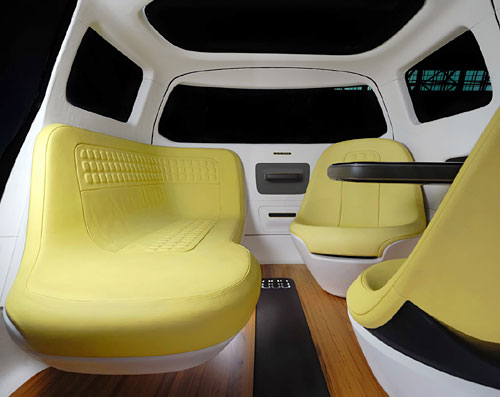
The simple yet sophisticated theme is brought to life inside the KV7 concept through its modern color palette featuring soft beige and green tones and the use of unique seat and surface materials. The KV7 utilizes a variety of unconventional textures, including reclaimed teak wood flooring and sustainable wool and felt materials help to foster a warm and inviting atmosphere. 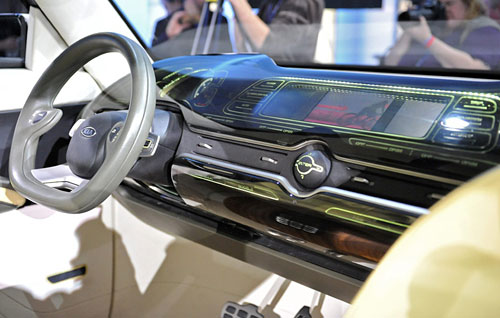
When the KV7 concept's push button start is engaged, the entire front dash moves more than six inches toward the driver, bringing all controls within easy reach, including the large multi-use display which integrates infotainment, climate and navigation systems in one simple-to-use interface controlled by a trackball mouse mounted in the dash. Rear passengers have their own, separate interface in the form of a floating tabletop touch-screen computer display. The KV7 is Wi-Fi enabled, providing both the front and rear displays wîth Internet capabilities and the ability for multiple passengers to connect their smart phones to the vehicle at one time and sign on to social networking sites.

